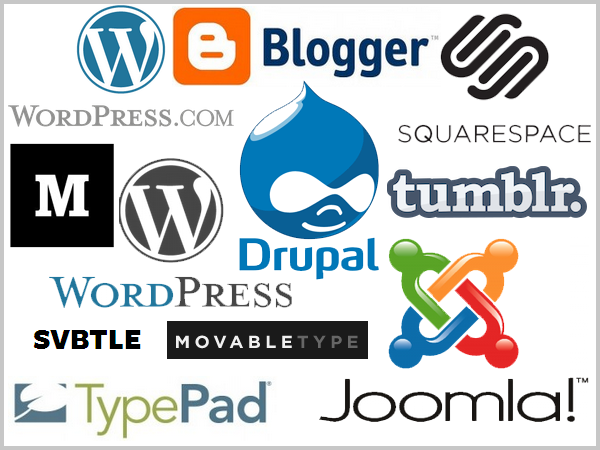In today’s digital world, blogging has become a powerful platform for sharing ideas, building a community, or even making money. If you’ve been thinking about starting a blog but don’t know where to begin, this guide will help you launch your blog successfully.
What is a blog?

A blog is an online platform where individuals or businesses regularly publish long-form content, known as posts, on various topics. Blogs can be personal, resembling a digital diary, or professional, covering subjects like technology, fashion, travel, or health.
How do I start a blog?
Starting a blog requires careful planning, consistent effort, and a passion for writing. Whether you want to blog for fun or make it your full-time job, following these steps will help you build a successful blog. Now that you have a roadmap, it’s time to start creating and sharing your voice with the world!
1. Pick a Niche
The first step in starting a blog is deciding on a topic or niche. This is the theme your blog will focus on. Choose a subject you’re passionate about and knowledgeable in, as it will be easier to create content regularly. Some popular niches include:
- Travel
- Personal Finance
- Health and Fitness
- Food and Recipes
- Technology Reviews
- News reports
A clear niche helps you attract a target audience who is interested in the specific content you provide.
2. Choose a Blogging Platform

Once you’ve decided on your niche, it’s time to pick a blogging platform. Some popular options are:
- WordPress.org (self-hosted): WordPress is a powerful, popular, and customizable platform used for creating websites.
- Blogger: Blogger is a free blogging platform from Google that allows users to create and publish blogs
- Medium: Medium’s Partner Program is for people who are interested in helping us fulfill our mission of deepening the collective wisdom of the world through personal expression, knowledge-sharing, and storytelling.
- Wix For maximum control over your blog, a self-hosted WordPress blog is often the best choice. It gives you flexibility in design, plugins, and monetization options.
3. Get a Domain Name and Hosting
To make your blog accessible on the internet, you need a domain name (your website address) and a hosting provider. You can purchase a domain name from companies like:
- TrueHost: Truehost Nigeria provides cheapest personalized hosting services tailored to various needs, making it a suitable option for businesses and individuals looking to scale their online operations
- Hostinger: Hostinger offers a range of services, including web hosting, domain registration, and an AI website builder that allows users to build websites without needing coding or design skills.
- Whogohost: Whogohost is a leading web hosting and domain registration company in Nigeria, offering a range of affordable web hosting packages and reliable services for domain registration. Get a discount when you use this promo code: WRP500156852
- Namecheap: Namecheap is a domain registrar and web hosting company that provides services such as registering domain names, web hosting, and offering various online tools and features like a VPN and website building resources.
Most hosting services offer affordable packages that include domain registration, which simplifies the process.
Read Also: Truehost: The Most Cheapest Domain and Hosting Provider at 1400 Naira Monthly
4. Design Your Blog
Once your domain and hosting are set up, the next step is to design your blog. If you are using WordPress, you’ll find hundreds of free and paid themes to choose from. Select a theme that aligns with your niche and ensures your blog is user-friendly and visually appealing. Customize the theme by adding your logo, adjusting the layout, and selecting fonts that reflect your style.
5. Create Content
Content is the heart of your blog. Before you launch, have a few high-quality articles ready to go live. Consider creating:
- Listicles (e.g., “10 Best Tips for…”)
- How-to Guides (e.g., “How to Start…”)
- Product Reviews or Personal Stories
Make sure your posts are well-researched, engaging, and helpful. You should also include images, videos, or infographics to make the content more interactive.
6. Optimize for SEO
Search Engine Optimization (SEO) is crucial to driving traffic to your blog. By optimizing your blog posts for search engines, you’ll rank higher on Google and attract more visitors. Basic SEO practices include:
- Keyword Research: Use tools like Google Keyword Planner to find relevant keywords.
- Title Tags & Meta Descriptions: Ensure each post has a catchy title and a concise meta description.
- Internal Linking: Link to other posts on your blog to keep readers engaged.
Tundetech Info offers SEO course that entails keyword research planning, on-page and off-page SEO techniques, high-paying job opportunities in the field, and strategies to earn money online through SEO. Additionally, you will explore ranking on YouTube, technical and local SEO practices, website performance testing, content creation, backlinking, analytics tracking, and utilizing paid ads and content marketing.
View this post on Instagram
PURCHASE HERE
7. Promote Your Blog
Once you have your blog up and running, promoting it is essential to attract visitors. Here are a few ways to get the word out:
- Social Media: Share your posts on Facebook, Twitter, Instagram, or Pinterest.
- Guest Blogging: Write for other websites to build backlinks and grow your audience.
- Email Marketing: Collect email addresses and send newsletters with your latest content.
- Engage with Readers: Respond to comments and join online communities in your niche.
Tundetech Info also offers digital marketing course that cover a wide range of topics to help students excel in the digital marketing field
PURCHASE HERE
8. Monetize Your Blog

Once you’ve built an audience, you can start making money from your blog. Popular monetization strategies include:
- Affiliate Marketing: Promote products or services and earn a commission for each sale.
- Display Ads: Use ad networks like Google AdSense to display ads on your blog.
- Sponsored Posts: Work with brands to create content that promotes their products.
- Sell Products: Offer digital products like eBooks, online courses, or merchandise.








